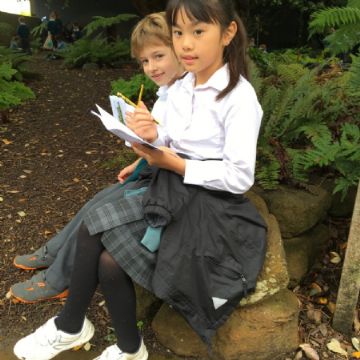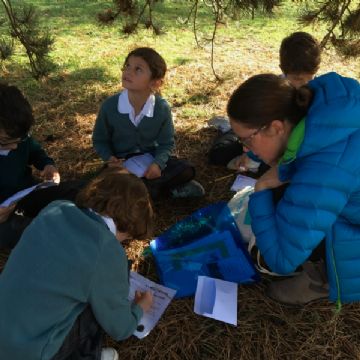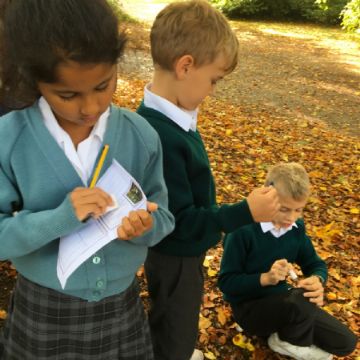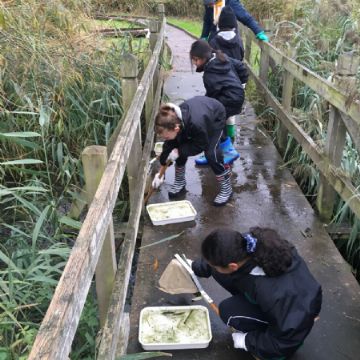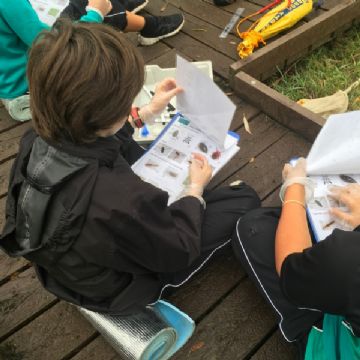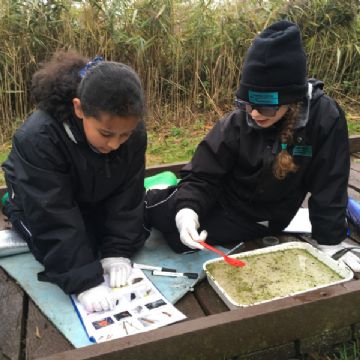
Autumn Expeditions with Years 3, 5 and 6
Published on 09/11/18
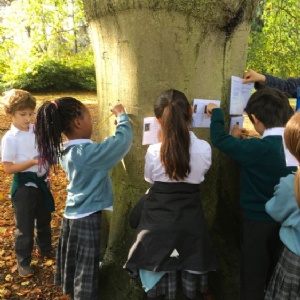
Years 3, 5 and 6 have been enjoying time out of the classroom, exploring nature around the Cambridge area.
Year 3 pupils visited the University Botanic Garden to wrap up their learning on ‘Let’s get out and about’. Where better to experience multiple paths to explore and see the key features of maps quite literally rising up from the ground? The foliage varied from the fabulous Cork tree and Weeping Beech trees to the unusual Swamp Cyrus and the mighty, towering Redwoods. Back at school the children have been enjoying using their new mapping knowledge as a springboard for Outdoor Learning activities as they work together to map out and explore the Nature Reserve. They even had a go at designing their own dream gardens.
undefined
On a chilly, bright November morning, Year 5 pupils set off for Epping Forest on a field study trip to investigate rivers. Prior to the visit they had spent some time learning about the features of rivers and how a river is formed from source to mouth. Epping Forest Field Study Centre operates a policy of sustainability to support its work in the local environment. We were all pleased to be able to recycle our rubbish after our snacks and lunch! The hilly terrain of Epping Forest was offset by the fiery colours of the last autumn leaves clinging to the trees.
Our leaders were very knowledgeable and led us through the complexities of the Water Cycle before relating this to the formation of rivers. Our practical activities were explained before we set off for the first of two expeditions into the forest itself. An interesting piece of digging equipment, a soil auger, allowed us to take soil samples in two separate areas to compare their colour, texture and feel. Sandy soils are paler and grainy which allows water to pass through easily; they are more permeable. The darker clay soil is denser and can get waterlogged.
After lunch we walked to a river bed and took lots of measurements of channel depth, width and pebble size. Getting right down into the river bed was particularly fun, although quite muddy and boggy in places. Going to another part of the river allowed us to make comparisons between ‘upstream’ and ‘downstream’ sections. It was a wonderful day out which has brought our Rivers topic alive, best summed up by the comment:
‘Can we come again tomorrow?’
Year 6 pupils have been experiencing the delights of autumn in the natural world, with trips to the Nature Reserve for the boys on 16 October and the girls on 30 October. The trips perfectly complemented the current Year 6 Biology topic on Evolution & Inheritance, providing invaluable opportunities to carry out biological fieldwork on living organisms in their natural habitat.
Both groups displayed much enthusiasm as they carried out their tasks, which included collecting and identifying land invertebrates in the soil, trees and plentiful fallen leaves of the season, pond and stream dipping and collecting key environmental data like air and soil temperature and pH.
The accompanying staff and parent volunteers were greatly impressed by the sensible and systematic way in which the pupils carried out their research. There was also time, of course, to experience the sheer beauty and exhilaration of outdoor exploration and there was much excitement at the appearance of exotic visitors including a frog, a great spotted woodpecker and a heron!
Just as research scientists follow up their field studies with scientific papers, the pupils will be producing written and illustrated reports on their findings, which will allow them to document the effects of the changing seasons on the living organisms in the Reserve.
undefined

